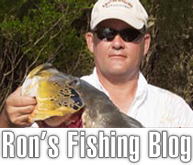Ron’s Fishing Tips and Stories: How Lake El Salto Became Great
 This week let’s talk about the most celebrated and famous black bass lake of all time: Lake El Salto! How did this small 12,000 acre lake get so popular and why does it produce so many huge bass? How did this happen? Why did other Mexican lakes (other than Comedero) not come even close to all the publicity and all the big bass?
This week let’s talk about the most celebrated and famous black bass lake of all time: Lake El Salto! How did this small 12,000 acre lake get so popular and why does it produce so many huge bass? How did this happen? Why did other Mexican lakes (other than Comedero) not come even close to all the publicity and all the big bass?
Lake El Salto did not start out as a great lake. In fact, it started out as a one-year wonder and then fell flat. We built the first camp on the water at Salto and were there when it opened. There were a couple guys keeping some fishermen in the village of Paradon Colorado in an old remodeled chicken pen but they were about five miles from the lake.
After the first year, we were all alone fishing the lake as the fishing went very bad after the first full year. Nothing but small, skinny, sickly bass and no big fish at all. I called the Texas fisheries people in Austin and talked to the head of fisheries, who I believe was Mr. Durocher. I explained the problem and he speculated that we had two problems going on at the lake: 1) we had too many bass for the amount of food available and 2) we probably needed some fresh blood introduced as the small bass always stayed small. When he asked about food sources, I told him we originally had threadfin shad but I hadn’t seen any in over a year. We also had two species of African tilapia but their numbers had been greatly reduced due to so many black bass. The commercial fishermen were not catching very many and what they did catch were small.
I was told the old solution of pond management might work to help solve our problem. This simple solution is that if you have too many small bass in a pond or small lake you have two choices. You can put more food in the lake or pond or you can start taking lots of fish out of the lake to get it into a good balance. I chose to get more food as the local people would not understand us taking out tons of bass while we were telling them not to fish the bass commercially.
Mr. Durocher with the Texas fisheries told me to get threadfin shad by seining and to put them in a round container filled with the very water in which we caught the shad. It was summertime so he said we would have to do it at night. He reminded me to never touch the shad with our hands but to use a net to get them out of the seine.
Our manager lived close to the lake and he knew some lagoons near Lake El Salto that had shad. We worked every night for 2 months hauling shad trip after trip from the lagoons to the lake. I estimated that we restocked over 500,000 threadfin shad into the lake. It has never been without plenty of shad since that stocking in–I believe–1996.
Next we began stocking pure strain Florida bass into the lake from Texas. Some came from Gary White in Van, Texas and some came from Catfish Meadows in Buffalo, Texas. Dr. Locke from Overton, Texas inspected the fish and gave the health permits to take them into Mexico legally. The Culiacan Bass Club, the Mazatlan Bass Club, and the Durango Bass Club assisted me with transport vehicles and some amounts of money.
Many thanks go to Helen Collard who was the head of the Federal Fishing department in Mazatlan for signing all the permits to allow the entry into Mexico and the stocking of these Florida strain bass. They were Florida strain but in effect came from the lone star state of Texas.
As Paul Harvey would say, now you have the REST OF THE STORY.
Good luck with your fishing and wear that lifejacket!

